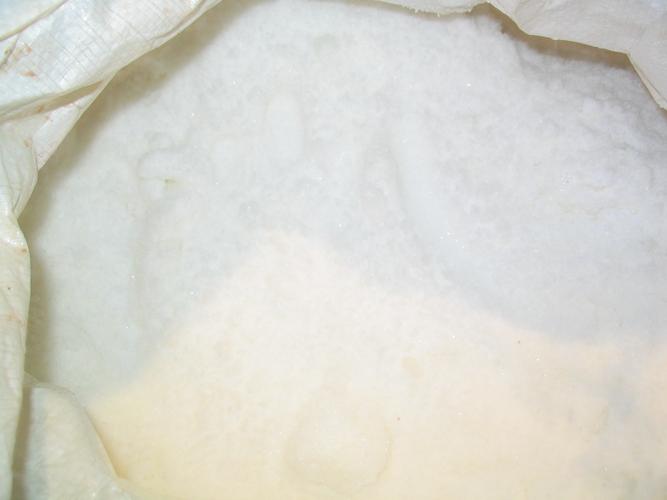[Alias]Trichloroacetic acid.
[Molecular Formula]C2HCl3O2
[Structural Formula]Cl3CCOOH

[Properties]Trichloroacetic acid is a colorless rhombic hexahedral crystal, easy to absorb moisture, has special air spiders, and has a relative density of 1.629 ( 25℃). Boiling point 197.6℃ (101.3kPa), refractive index 1.459 (65℃). There are two different crystals: α-type with a melting point of 58°C and β-type with a melting point of 49.6°C. Easily soluble in water and solvents such as methanol, ethanol, ether, acetone, benzene, carbon tetrachloride, hexane, o-xylene, etc. The aqueous solution is acidic (pH value of 0.1 mol aqueous solution is 1.2). Since there are three C3 atoms on the methyl group, it shows strong acidity. After the trichloroacetic acid aqueous solution is heated to the boiling point, it is decarboxylated and decomposed into chloroform and carbon dioxide. Forms salts with a variety of inorganic and organic bases.
[Use] Used as a raw material for organic synthesis and pesticide manufacturing to prepare anhydrides and esters of trichloroacetic acid. It is an excellent herbicide, dyeing aid, protein precipitating agent, fixative for microscope samples, and metal surface treatment agent. It can be used as a reagent for measuring fluoride and bile pigments, and as an extraction agent for biochemical drugs such as adenosine triphosphate, placental lipopolysaccharide, etc.
[Brief preparation method]
①Prepared by complete chlorination of acetic acid. It can be obtained by chlorinating the chloroacetic acid mother liquor at 90-100°C in the presence of a sulfur catalyst.
② Prepared by oxidation of benzodichloroacetaldehyde.
[Safety and Protection]Trichloroacetic acid is a second-level organic acid corrosive substance, hazardous regulation number: 94005. Packed in ceramic altars and reinforced with wooden boxes. Store in a cool and dry place. OzoneBAcid is extremely corrosive and irritating. Contact with skin should be done immediately “>Use plenty of waterRinsewash.

 微信扫一扫打赏
微信扫一扫打赏

